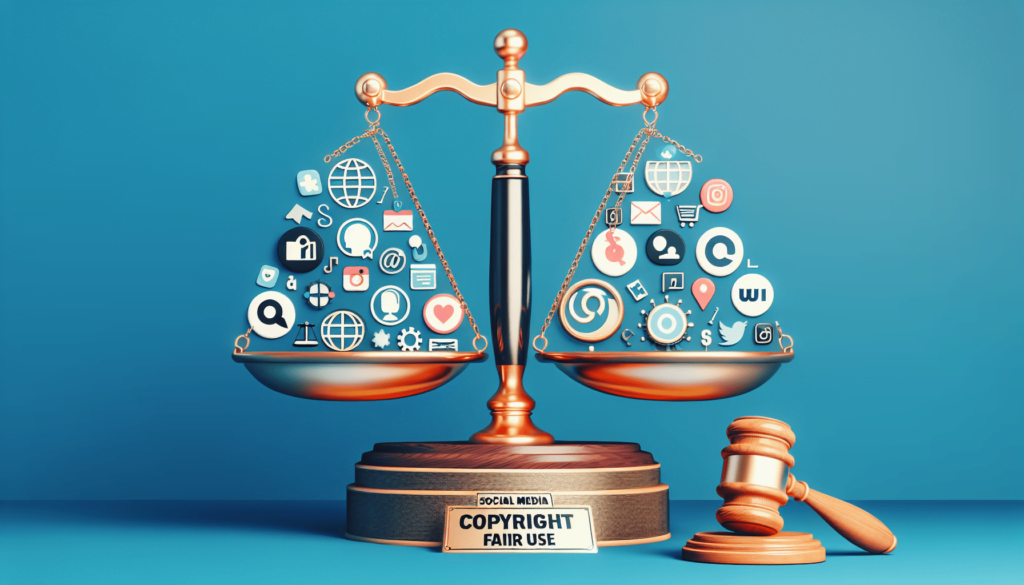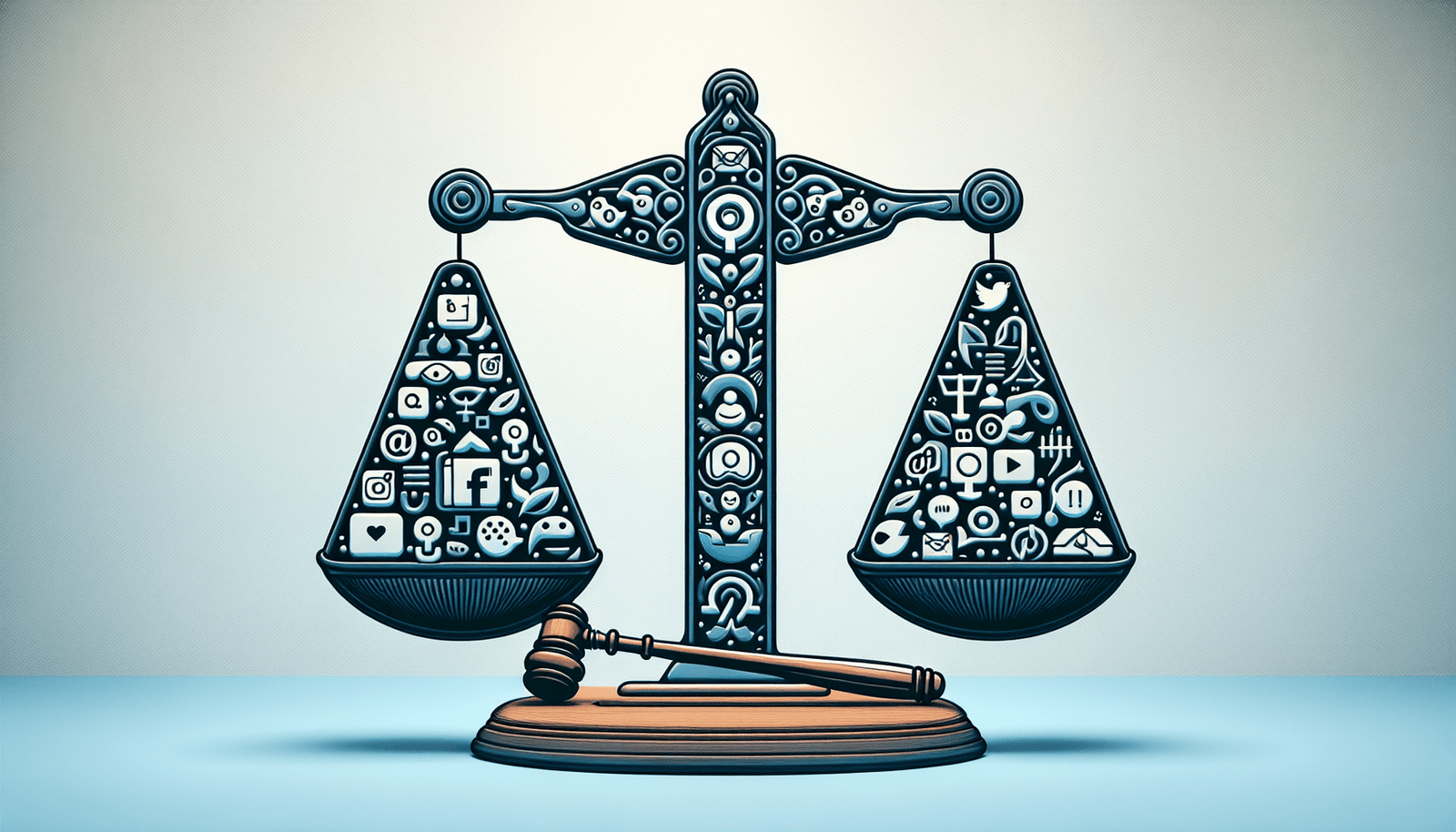Social Media Copyright Fair Use: What You Need to Know delves into the intricacies of copyright laws as they apply to social media. As someone who frequently shares content online, understanding these rules is key to staying out of legal hot water. The article aims to clarify what fair use means, how to determine if your content falls under this category, and practical tips for avoiding copyright infringement. By breaking down complex legal terms into friendly, digestible nuggets, the guide not only informs but also entertains, making your journey through the maze of social media copyright laws a bit less daunting and a lot more engaging. Have you ever posted a photo on social media only to panic later, wondering if you violated copyright?
Social Media Copyright Fair Use: What You Need to Know
It’s a scenario many of us have faced—sharing something on Twitter, Facebook, or Instagram, and then nagging questions pop up. “Is this okay?” “Could I get in trouble?” As social media becomes ever more integral to our lives, so too do the murky waters of copyright laws and fair use. Today, let’s dive into the depths of this topic together, with a life raft of humor and a friendly, easy-to-understand tone.

What is Copyright?
First things first, what even is copyright?
Copyright is a form of protection granted by law to creators of “original works of authorship.” This means anything from literary, dramatic, musical, and artistic works to websites and software code. If you create something unique and put it out into the world, you automatically have copyright over it.
The Role of Social Media
Social media platforms are essentially giant content-sharing machines. Every day, people share millions of pieces of content—from memes and gifs to articles and songs. With this massive exchange of content, the line between what’s yours, mine, and ours can blur really quickly.
Think of social media as a giant buffet table. Just because the food is set out doesn’t mean it’s okay to grab a handful and run. The same goes for content—you can’t just right-click and save everything you fancy and share it as your own.
Fair Use: The Gray Area
Fair use is like the wild, wild west of copyright law. It’s a doctrine that permits limited use of copyrighted material without obtaining permission from the rights holders. The catch? It’s as clear as mud sometimes.
Four Factors to Determine Fair Use
There are four key factors in determining whether something qualifies as fair use:
- Purpose and Character of Use: Are you using the material for educational purposes, or are you making money off it? Transformative use (adding new expression or meaning) is more likely to be considered fair use.
- Nature of the Copyrighted Work: Is the work more factual or creative? The more imaginative the work (like a novel), the less likely your use will be considered fair.
- Amount and Substantiality: How much of the work are you using? Taking a tiny snippet is better than the whole kit and caboodle.
- Effect on the Market: Does your use of the work affect its market value? If people can get the original because of your post, fair use might not apply.
Applying Fair Use on Social Media
Understanding fair use in theory is one thing, but applying it in the mind-bending universe of social media is another.
Imagine you see a meme and decide to share it on your Instagram. Is that fair use? Likely not. Memes are often considered derivative works because they transform the original content. But what if you write a blog post critiquing a TV show and include a short clip? That stands a better chance of falling under fair use.

Common Myths About Fair Use
Myth 1: Giving Credit Equals Fair Use
Nope, it doesn’t. Giving credit to the original creator does not automatically mean you’re in the clear. You still need to consider the four factors of fair use. Think of it like citing a source in your term paper. It’s nice, but it doesn’t mean you wrote the whole paper.
Myth 2: Non-Commercial Equals Fair Use
Just because you’re not making money off the content doesn’t make it fair use. If your shared content could hurt the original’s market value, you’re treading into dangerous territory.
Myth 3: Thirty Seconds is Always Fair Use
A rumor as pervasive as bad karaoke. There’s no hard and fast rule about using a specific number of seconds of a song or video.
Legal Consequences of Copyright Infringement
Alright, let’s talk stakes. What can happen if you blunder into copyright infringement on social media?
Take-Down Notices
The initial slap on the wrist. If a copyright owner sees their work used without permission, they can send a take-down notice to the social media platform, asking to remove the content. Platforms like Facebook and YouTube have mechanisms in place to comply with these notices.
DMCA Takedowns
The Digital Millennium Copyright Act (DMCA) is the vigilant night watchman of the internet. If you violate copyright laws, you might get a DMCA takedown notice. Repeated violations could lead to your account being suspended or banned.
Lawsuits
Imagine the worst-case scenario: the copyright owner decides to sue you. They could potentially claim thousands or even millions in damages. Although rare, it has happened, and lawsuits are not exactly a picnic in the park.
Protecting Yourself: Best Practices
Create Your Own Content
The best way to stay out of hot water is to create your own content. When you use your own photos, videos, and words, you own the copyright.
Get Permissions
If you find something you really want to share, reach out to the original creator and ask for permission. Most creators appreciate getting credit and will often let you use their work if you ask nicely.
Use Licensed Material
Look for content under Creative Commons licenses, which allow for sharing and adapting the work under certain conditions. Websites like Pixabay, Unsplash, and Pexels offer free-to-use licensed images.
Use It Sparingly
Remember the factor of Amount and Substantiality? Use only the small portions that you need. This is especially useful for critiques, reviews, and educational purposes.
Personal Anecdote: My Own Brush with Copyright
Let me share a little story. Picture this: A beautiful photo of a sunset at the beach catches my eye on Pinterest. Mesmerized by the hues of orange and pink, I thought, “This belongs on my Instagram!” A couple of days later, I receive a rather stern direct message from the photographer. Turns out, that stunning sunset was copyrighted. I had to delete the post and apologize profusely, imagining the legal storms that could have come my way. Since then, I’ve been a lot more cautious and lean towards using my own mediocre sunset photos. Lesson learned!
Fun Facts about Fair Use
Parody and Satire
Did you know that parody and satire are often protected under fair use? Look at shows like “Saturday Night Live” or those funny YouTube parodies. Because they add new meaning and critique the original, they generally get a pass.
Academic Use
If you’re a student or educator, you’re in luck. Educational purposes like teaching, research, and news reporting have broader leeway under fair use. But remember, it’s still not a free-for-all.
Real-World Examples
The H3H3 Case
YouTube is a hotbed for fair use debates. One striking example is the H3H3 Productions lawsuit. The comedy duo behind the channel were sued for using clips from another creator’s video in a critical context. They won the case, marking a big win for fair use claims on YouTube.
Lenz v. Universal Music Corp
This one involves a mom, a baby, and Prince. When Stephanie Lenz posted a video of her baby dancing to Prince’s “Let’s Go Crazy,” she might not have expected a showdown with a music giant. The case became a landmark ruling in favor of fair use, emphasizing that courts must consider fair use before issuing DMCA take-down notices.
FAQs: Quick Answers for Quick Questions
Q: Can I use copyrighted material if I’m not making money?
A: Non-commercial use doesn’t automatically mean fair use. You still need to consider how your use affects the market value of the original.
Q: If I alter the image or video, is it okay to use?
A: Modifying a piece can sometimes transform it enough to qualify as fair use but not always. The change should add new expression or meaning, not just be a basic edit.
Q: Are educational uses always considered fair use?
A: Educational contexts have more leeway, but they still have to pass the four factors of fair use. It’s advisable to use only what is absolutely necessary.
Q: Can I share news articles or blog posts on social media?
A: Sharing links to news articles or blog posts usually isn’t a problem and often aligns with fair use. Reproducing the content in its entirety, though, could land you in hot water.
Final Thoughts: Navigating the Sea of Social Media Fair Use
Navigating copyright fair use on social media is like sailing through choppy waters. Knowing the rules can help you avoid potential pitfalls. When in doubt, lean towards caution—create your own content, ask for permissions, and always think about those four magic factors of fair use. Your Instagram will thank you, and your peace of mind will be as serene as that sunset I posted once-upon-a-time.
Remember, though: this is just friendly advice from someone who has navigated the murky waters and lived to tell the tale. For any serious legal concerns, always consult a professional.
Now, go forth and post wisely! And if you can’t resist sharing that hilarious meme, maybe just hashtag it with #PleaseDontSueMe.



